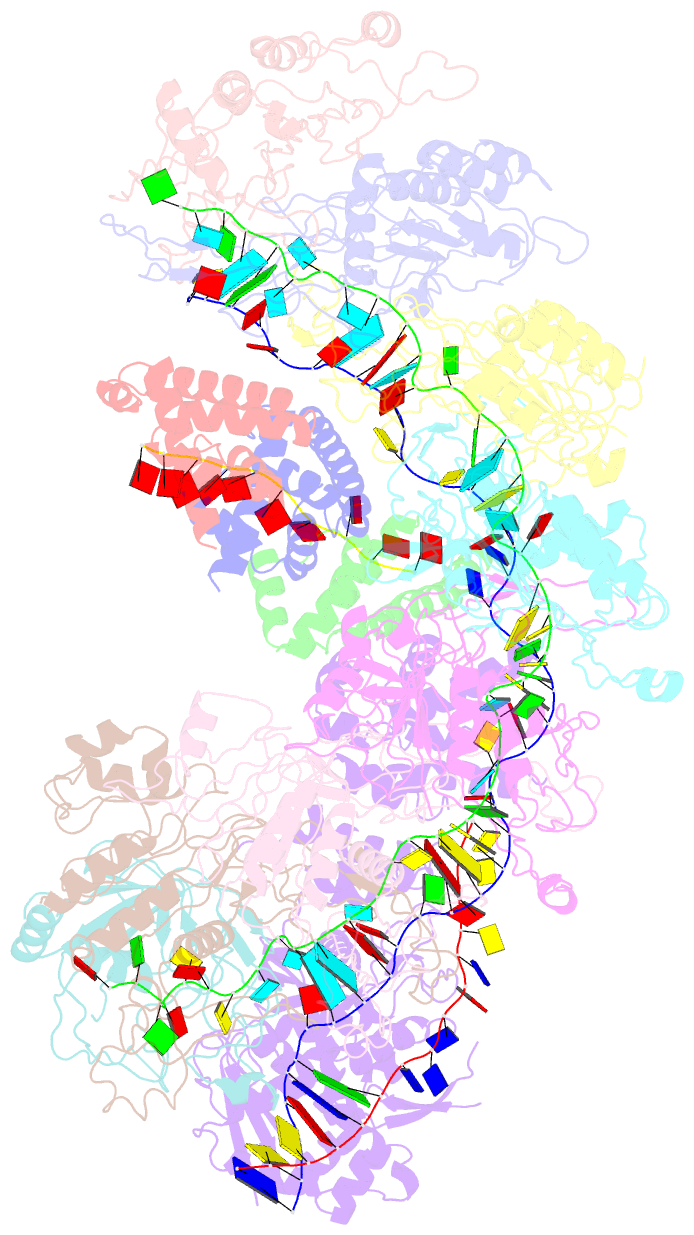Summary information and primary citation
- PDB-id
- 8ip0; SNAP-derived features in text and JSON formats;
DNAproDB
- Class
- RNA binding protein-RNA-DNA
- Method
- cryo-EM (3.6 Å)
- Summary
- cryo-EM structure of type i-b cascade bound to a pam-containing dsDNA target at 3.6 angstrom resolution
- Reference
- Lu M, Yu C, Zhang Y, Ju W, Ye Z, Hua C, Mao J, Hu C, Yang Z, Xiao Y (2024): "Structure and genome editing of type I-B CRISPR-Cas." Nat Commun, 15, 4126. doi: 10.1038/s41467-024-48598-2.
- Abstract
- Type I CRISPR-Cas systems employ multi-subunit effector Cascade and helicase-nuclease Cas3 to target and degrade foreign nucleic acids, representing the most abundant RNA-guided adaptive immune systems in prokaryotes. Their ability to cause long fragment deletions have led to increasing interests in eukaryotic genome editing. While the Cascade structures of all other six type I systems have been determined, the structure of the most evolutionarily conserved type I-B Cascade is still missing. Here, we present two cryo-EM structures of the Synechocystis sp. PCC 6714 (Syn) type I-B Cascade, revealing the molecular mechanisms that underlie RNA-directed Cascade assembly, target DNA recognition, and local conformational changes of the effector complex upon R-loop formation. Remarkably, a loop of Cas5 directly intercalated into the major groove of the PAM and facilitated PAM recognition. We further characterized the genome editing profiles of this I-B Cascade-Cas3 in human CD3+ T cells using mRNA-mediated delivery, which led to unidirectional 4.5 kb deletion in TRAC locus and achieved an editing efficiency up to 41.2%. Our study provides the structural basis for understanding target DNA recognition by type I-B Cascade and lays foundation for harnessing this system for long range genome editing in human T cells.





